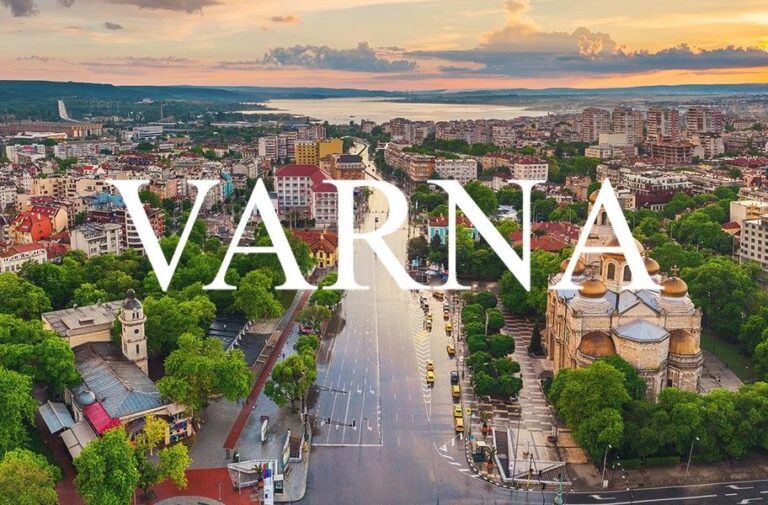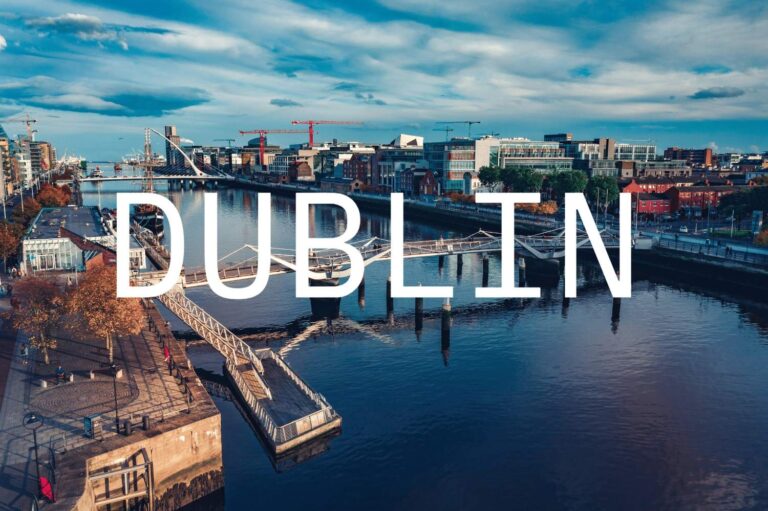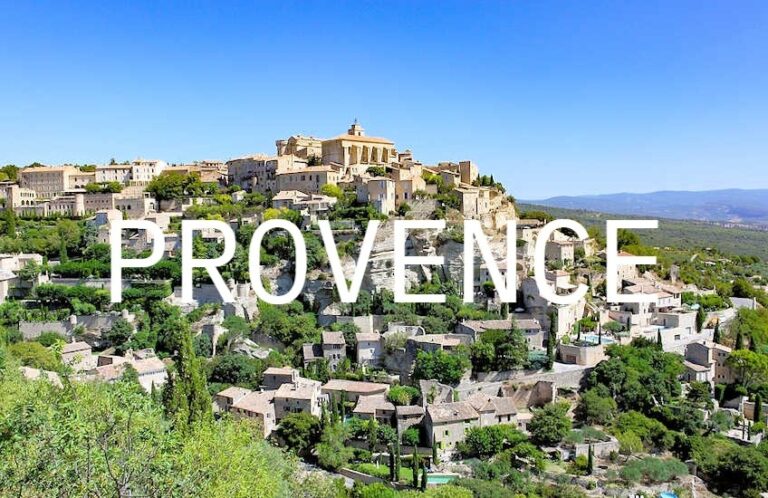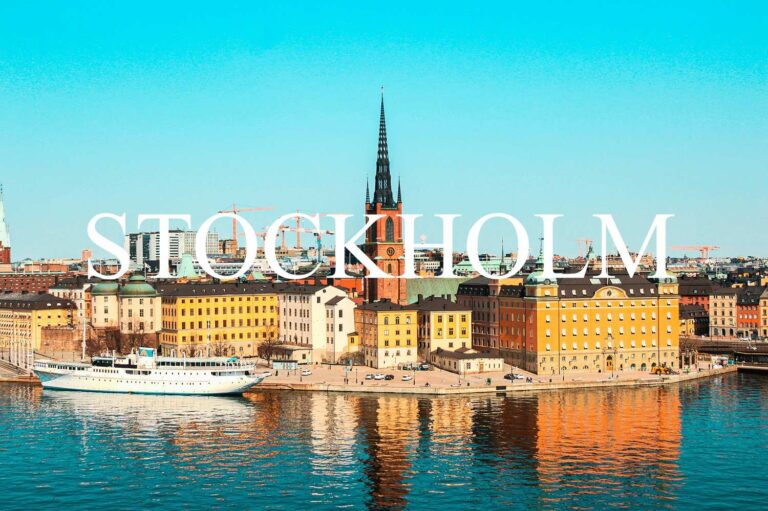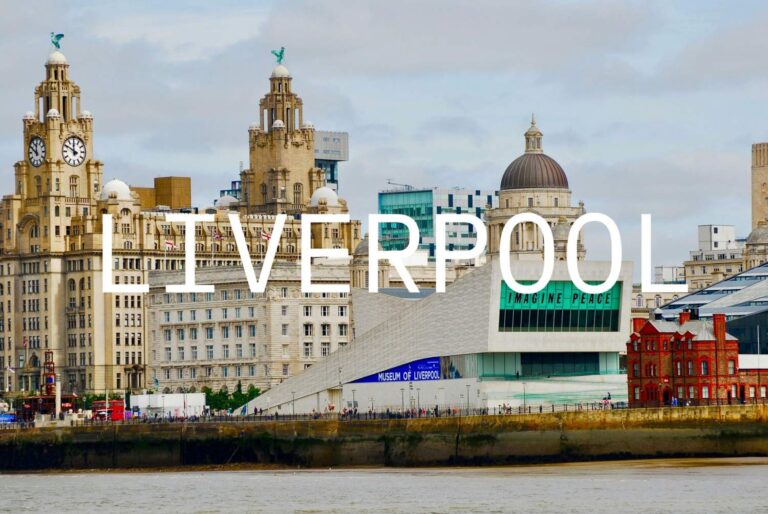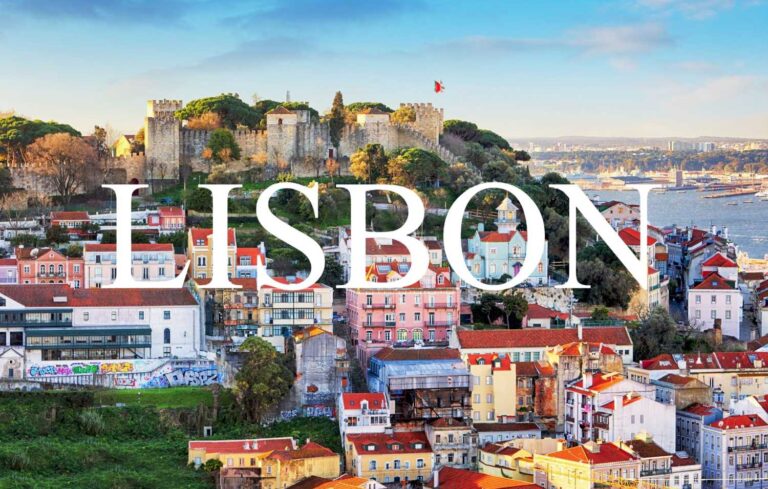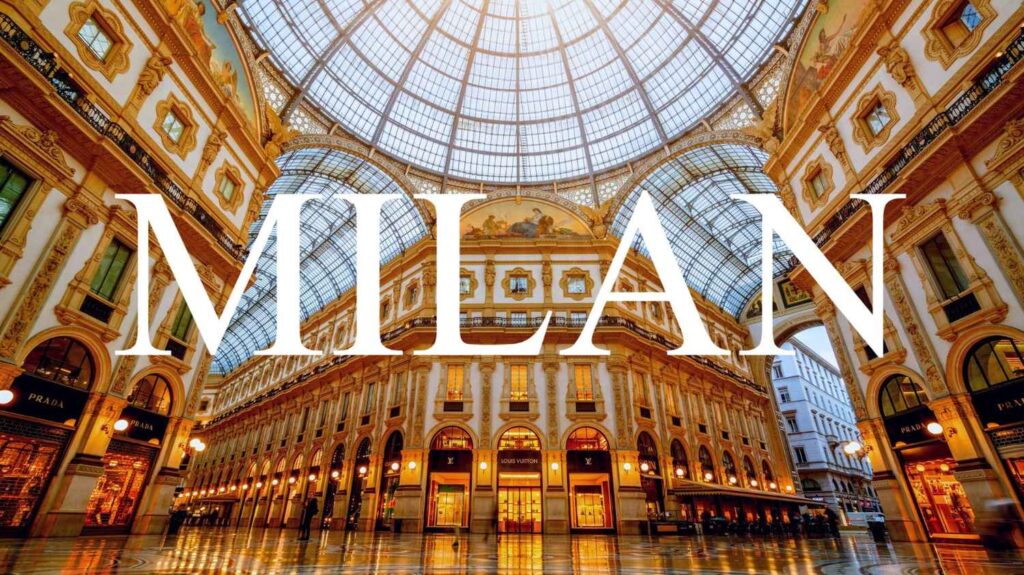
Milan is much more than Italy’s renowned fashion capital—it’s a dynamic metropolis where history, art, design, and contemporary culture effortlessly intertwine. This vibrant city captivates visitors with its stunning architectural masterpieces like the majestic Duomo di Milano and the historic Galleria Vittorio Emanuele II, offering a perfect blend of the old and new.
For art lovers, Milan is home to world-class museums such as the Pinacoteca di Brera and Leonardo da Vinci’s famous mural, The Last Supper, located in the Convent of Santa Maria delle Grazie. Beyond the iconic sights, Milan invites you to explore charming hidden courtyards, bustling piazzas, and trendy neighborhoods like Navigli, where picturesque canals meet a lively nightlife scene.
Shopaholics will find paradise in Milan’s upscale boutiques, designer stores, and flagship fashion houses lining Via Montenapoleone and Corso Buenos Aires. Food enthusiasts can indulge in Milanese culinary delights, from traditional risotto alla Milanese to innovative dishes crafted by cutting-edge chefs in the city’s modern eateries.
Whether you’re drawn by Milan’s rich history, world-famous fashion, vibrant arts scene, or culinary innovations, this sophisticated city promises an unforgettable experience that beautifully balances timeless elegance with contemporary energy.
🗓️ Best Time to Visit Milan
Milan is a year-round destination, but here’s when it shines:
- 🌸 Spring (April–June): Mild temperatures and blooming gardens make it the perfect time to explore the city’s open-air beauty.
- 🍂 Autumn (September–October): Fashion Week, fewer crowds, and pleasant weather—ideal for sightseeing and shopping.
- ☀️ Summer (July–August): Hot and quieter (locals leave for vacation), but still full of charm. Some shops and restaurants may close in August.
- ❄️ Winter (December–February): Cool and festive, especially during Christmas when the city lights up with markets and decorations.
💰 Currency & Useful Travel Info
- Currency: Euro (€)
- Language: Italian (English widely spoken in tourist areas)
- Transport: Excellent metro, tram, and bus system
- Average Daily Budget:
- Budget: €60–90
- Mid-range: €100–200
- Luxury: €250+
💡 Tip: Contactless payment is common. Buy a 24/48/72-hour ATM public transport pass for convenience.
🏛️ 10 Best Places to Visit in Milan
Duomo di Milano (Milan Cathedral)
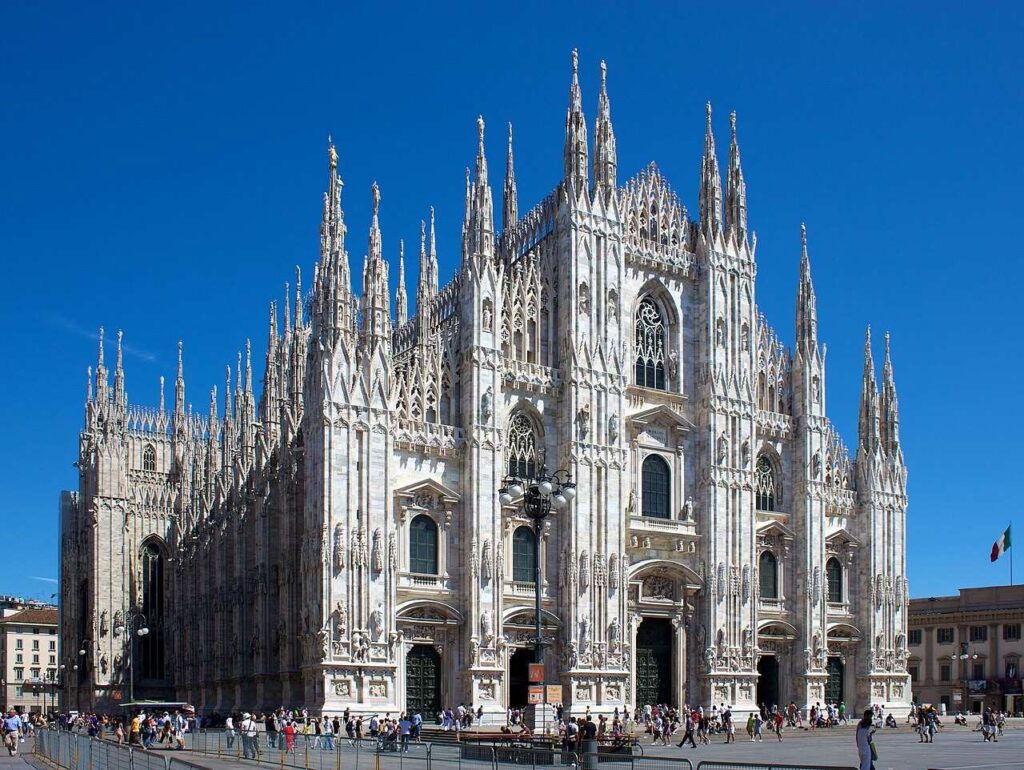
The Duomo di Milano, or Milan Cathedral, is one of the most iconic and awe-inspiring landmarks in Italy, standing proudly at the heart of Milan. This Gothic masterpiece, which took nearly six centuries to complete, is a stunning blend of intricate architecture, historical significance, and artistic beauty. Whether you’re admiring its spires from the Piazza del Duomo or exploring the stunning interiors, the Duomo is a must-visit destination for anyone traveling to Milan.
🌟 Highlights of the Duomo di Milano
• Gothic Architecture at Its Finest
The Duomo is a shining example of Gothic architecture with its intricate facades, pointed arches, and over 3,400 statues. The cathedral’s spires rise to a height of 108 meters (354 feet), making it one of the tallest buildings in Milan. The structure is adorned with delicate carvings, stained glass windows, and a series of sculptures that tell stories of faith, history, and art. The cathedral’s white marble exterior, crafted from Candoglia marble, gives it an ethereal and majestic appearance.
• The Rooftop Views
One of the most popular activities for visitors is taking the elevator or climbing the 250 steps to the roof of the Duomo, where panoramic views of Milan await. From the top, you can see the sprawling city below, as well as distant views of the Alps on clear days. The rooftop also gives visitors an up-close look at the cathedral’s spires, statues, and flying buttresses — intricate details that are impossible to fully appreciate from the ground.
• Stunning Interiors
Inside the Duomo, visitors are treated to a grandiose display of religious and artistic beauty. The cathedral’s high vaulted ceilings, towering columns, and colorful stained glass windows create a sense of awe. The Pietà by Michelangelo, displayed in one of the cathedral’s chapels, is another highlight. The interior is also home to important religious relics, altars, and sculptures that showcase centuries of artistic and theological evolution.
• The Royal Chapel (Cappella del Re)
A special feature inside the Duomo is the Royal Chapel, where the remains of Saint Charles Borromeo, the Archbishop of Milan, are housed. This chapel, with its stunning decor and religious significance, is a peaceful and reflective spot in the cathedral.
• The Treasury
The Duomo’s treasury houses a remarkable collection of religious relics, sculptures, and historical artifacts. Visitors can learn more about the cathedral’s rich history through its extensive collection of religious artifacts that span centuries.
🚶♂️ How to Get There
• By Metro:
The Duomo di Milano is easily accessible via Milan’s efficient Metro system. Take the Red Line (Line 1) or Yellow Line (Line 3) and exit at Duomo Station. The cathedral is just steps away from the station entrance.
• By Tram or Bus:
Several trams and buses also pass by Piazza del Duomo, including tram lines 1, 2, and 3, as well as buses 54, 60, and 61.
• On Foot:
If you’re staying in the city center, the Duomo is within walking distance of popular landmarks like Galleria Vittorio Emanuele II, Piazza della Scala, and Sforza Castle. The cathedral is a central point in Milan, so it’s hard to miss!
🕒 Visitor Information
• Opening Hours:
The Duomo di Milano is open to visitors every day from 8:00 AM to 7:00 PM, with the last entry at 6:00 PM. The rooftop is open from 9:00 AM to 7:00 PM, and masses are held regularly throughout the week.
• Entry Fee:
Entrance to the Duomo di Milano itself is free; however, there is a fee to access the rooftop, museum, and treasury. Expect to pay around 15–20 EUR for a rooftop visit and access to other areas. Discounts are often available for students, seniors, and children.
• Recommended Visit Duration:
Plan to spend at least 1.5 to 2 hours exploring the Duomo and its surroundings. If you plan to visit the rooftop and museum, allocate around 3 hours in total.
💡 Travel Tips
• 🎟️ Buy Tickets in Advance:
The Duomo di Milano is one of Milan’s most popular attractions, and lines can get long, especially during the high season. To save time, it’s highly recommended to purchase tickets online in advance.
• 👟 Wear Comfortable Shoes:
If you plan to climb the steps to the rooftop, be sure to wear comfortable shoes, as the climb can be a bit strenuous. Alternatively, you can take the elevator to the top.
• 🎨 Explore the Surrounding Area:
Don’t forget to explore the Piazza del Duomo and the surrounding area. The Galleria Vittorio Emanuele II is just next door, offering luxury shopping and beautiful historic architecture. You can also visit the Teatro alla Scala, one of the world’s most famous opera houses, nearby.
• 🌞 Best Time to Visit:
To avoid the crowds, consider visiting the Duomo early in the morning or later in the afternoon. The evening hours provide a quieter experience, and the city lights at night make the cathedral look even more magical.
The Duomo di Milano is a breathtaking testament to Milan’s rich cultural and architectural heritage. With its stunning Gothic design, incredible rooftop views, and religious significance, it offers something for everyone — from history buffs to architecture enthusiasts and spiritual seekers. Whether you’re marveling at its grandeur from the square or exploring its hidden treasures inside, the Duomo remains an unforgettable part of Milan’s skyline.
Galleria Vittorio Emanuele II
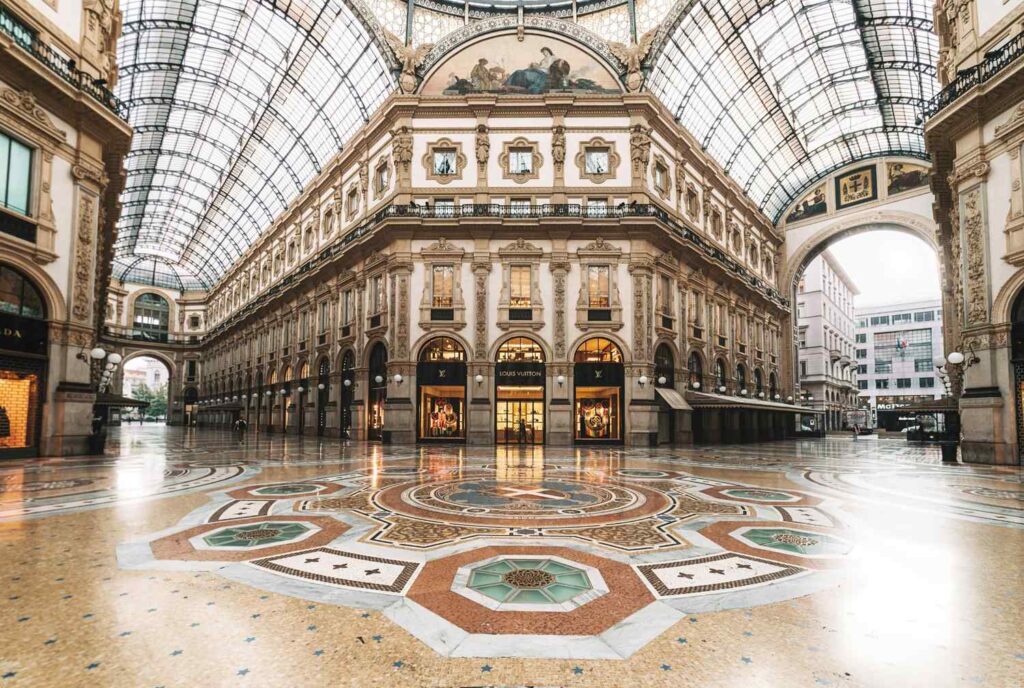
Photo by Federico Di Dio photography on Unsplash
One of Milan’s most iconic landmarks, Galleria Vittorio Emanuele II is not just a shopping mall but a monumental architectural marvel. Opened in 1867, this grand gallery stands as a symbol of Milan’s elegance, luxury, and historical significance. With its stunning glass dome, mosaic floors, and ornate facades, the Galleria is both a shopper’s paradise and a cultural masterpiece. It’s a must-visit for anyone exploring Milan, whether you’re looking to shop, dine, or simply soak in the beauty of this architectural gem.
🌟 Highlights of Galleria Vittorio Emanuele II
• 🏛️ Impressive Architecture
Admire the breathtaking architecture of the Galleria, featuring a massive glass and iron dome, marble floors, and intricately decorated ceilings. The gallery connects two of Milan’s most important squares: Piazza del Duomo and Piazza della Scala.
• 🛍️ Luxury Shopping
The Galleria is home to some of the world’s most prestigious fashion brands, including Prada, Louis Vuitton, Gucci, and Ferragamo. Whether you’re window-shopping or indulging in high-end fashion, the Galleria offers an unmatched luxury experience.
• 🍽️ Elegant Dining
The Galleria boasts several historic cafés and restaurants, perfect for enjoying a coffee or a meal in a refined setting. Don’t miss the Caffè Biffi, which has been serving Milanese residents since 1867, or the beautiful Ristorante Savini for a taste of Italian fine dining.
• 🎨 Mosaic Floors and Symbolism
The floors of the Galleria are adorned with beautiful mosaics representing the four major cities of Italy: Rome, Florence, Milan, and Turin. Look closely and you’ll notice a popular local tradition: spinning on the bull’s testicles in the mosaic of Turin, believed to bring good luck!
• 🎭 Cultural Center
The Galleria isn’t just about shopping—it’s also a cultural space with historical significance. It sits adjacent to Teatro alla Scala, one of the world’s most famous opera houses, making it a hub for Milan’s cultural and artistic life.
🚗 How to Get There
• Public Transport:
The Galleria is located in the heart of Milan and is easily accessible by metro (Lines M1 and M3, Duomo Station), which is just a short walk from the entrance.
• On Foot:
If you’re already in Milan’s city center, the Galleria is just a few minutes’ walk from Piazza del Duomo and Piazza della Scala.
🕒 Visitor Information
• Opening Hours:
The Galleria is open every day from 7:30 AM to 10:00 PM, with individual stores and cafés having their own operating hours, often extending into the evening.
• Entry Fee:
There is no entry fee to visit the Galleria itself, though individual stores and dining spots may have their own pricing.
• Recommended Visit Duration:
Plan to spend 30 minutes to 1 hour exploring the gallery, depending on whether you wish to shop, grab a coffee, or simply admire the architecture.
💡 Travel Tips
• 🎟️ Shop and Dine in Style:
While you’re in the Galleria, make sure to stop by Caffè Gilli or Caffè Biffi to enjoy a coffee in a Milanese institution. The atmosphere inside these historic cafés is perfect for a moment of relaxation.
• 📸 Best Photo Opportunities:
The Galleria’s grand glass dome and the intricate mosaic floors provide excellent photo opportunities, so don’t forget your camera or smartphone to capture the elegance of the space.
• 🧭 Explore Nearby Attractions:
After visiting the Galleria, you can explore nearby attractions like Milan Cathedral (Duomo), Teatro alla Scala, and Piazza della Scala, all within walking distance.
• 💎 For Shoppers:
If luxury shopping is your thing, the Galleria offers a selection of high-end boutiques that will surely delight. Be sure to browse the designer stores and take in the opulent ambiance.
Galleria Vittorio Emanuele II is not just a place to shop—it’s an iconic Milanese landmark that perfectly blends history, architecture, luxury, and culture. Whether you’re enjoying the elegance of the building, sipping coffee in a historic café, or browsing the designer boutiques, a visit to the Galleria is an unforgettable experience in Milan. It’s a true celebration of the city’s artistic heritage and modern-day sophistication.
The Last Supper (Santa Maria delle Grazie)
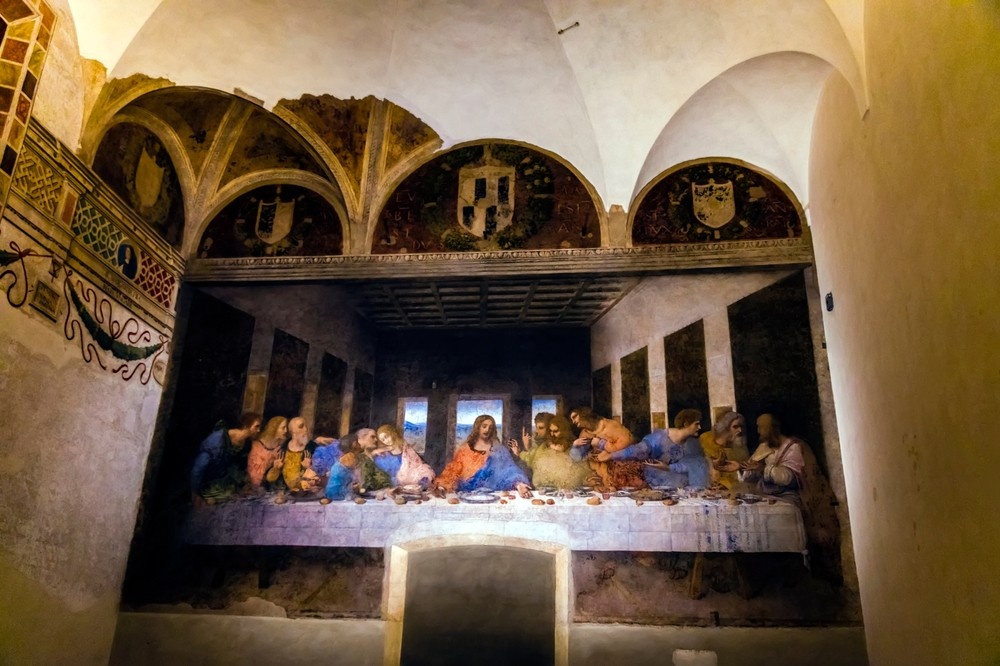
Located in the refectory of the Convent of Santa Maria delle Grazie in Milan, The Last Supper (Cenacolo Vinciano) is one of the world’s most iconic and revered works of art. Painted by Leonardo da Vinci between 1495 and 1498, this fresco captures the moment when Jesus Christ announces that one of his disciples will betray him, leading to a dramatic array of emotions on the faces of the apostles. The painting is celebrated for its compositional brilliance, emotional depth, and innovative use of perspective.
🌟 Highlights of The Last Supper (Cenacolo Vinciano)
• Masterful Artistic Composition
Leonardo’s genius shines through in The Last Supper through his use of perspective, light, and composition. The scene is painted on the wall of the refectory of the Santa Maria delle Grazie monastery, and Leonardo uses the architecture of the room itself to create a sense of depth. The centrality of Christ and the way the apostles are grouped creates a dynamic tension, as their reactions to Christ’s announcement vary between shock, disbelief, and curiosity.
• A Study in Emotion and Symbolism
What sets The Last Supper apart from other religious depictions of the same event is its emotional intensity. Leonardo uses the facial expressions and body language of the figures to convey a wide array of emotions. The symbolism of the moment is also notable — Christ’s outstretched arms, the placement of Judas (the betrayer), and the careful arrangement of the apostles all contribute to the depth of the narrative.
• Innovative Techniques
Leonardo’s approach to painting was revolutionary for its time. Instead of using traditional fresco techniques, Leonardo opted for an experimental method, using tempera and oil on plaster. Though this method has caused some deterioration over the centuries, the painting’s technical brilliance is still evident.
• The Controversy of Judas
One of the most intriguing aspects of the painting is the way Leonardo depicted Judas Iscariot. Unlike traditional portrayals where Judas is depicted as sinister or isolated, in Leonardo’s painting, he sits close to Jesus, almost blending into the group, symbolizing the internal conflict and the complex nature of betrayal.
• Conservation Efforts
Over the centuries, The Last Supper has faced significant challenges, including war damage, humidity, and deterioration from Leonardo’s experimental painting techniques. However, extensive restoration projects over the years have allowed the painting to survive and remain a masterpiece for modern audiences to admire.
🚶♂️ How to Get There
• By Metro:
The nearest metro station to Santa Maria delle Grazie is Conciliazione (Red Line, Line 1). It’s a short walk from the station to the church and the refectory.
• By Tram or Bus:
Tram lines 16, 24, and 27, as well as bus lines 50, 61, and 94, stop near Santa Maria delle Grazie.
• On Foot:
If you’re staying in central Milan, you can easily walk to the Santa Maria delle Grazie from Piazza del Duomo, which is about a 15-minute walk through the charming streets of Milan.
🕒 Visitor Information
• Opening Hours:
The Last Supper is accessible from 9:00 AM to 7:00 PM every day, with the last entry at 6:45 PM. It’s important to note that visits to the fresco are by scheduled time slots, so booking in advance is essential.
• Entry Fee:
Tickets for The Last Supper typically cost around €15-€20, depending on the time of day and whether you opt for an audio guide or guided tour. It’s highly recommended to book tickets well in advance, as slots often sell out quickly.
• Recommended Visit Duration:
A visit to The Last Supper usually takes about 15–20 minutes, as only a limited number of visitors are allowed inside the refectory at any given time. If you’d like a deeper understanding of the artwork, consider booking a guided tour.
💡 Travel Tips
• 🎟️ Book Tickets Early:
Tickets for The Last Supper are often in high demand. You can book tickets on the official website of the museum or through authorized ticket providers. Advance booking is highly recommended to ensure you don’t miss out.
• ⏰ Arrive on Time:
Because the number of visitors is restricted, it’s important to arrive early to your scheduled time slot. Late arrivals might not be admitted to the viewing room.
• 🎧 Audio Guide:
An audio guide is available to provide more context about the painting, its history, and the techniques used by Leonardo. It’s a great way to enhance your visit and understand the deeper meanings behind the composition.
• 👟 Wear Comfortable Shoes:
While the time spent in front of The Last Supper is brief, you may have to walk or wait in line before your designated entry time. Comfortable shoes are always a good idea.
• ☔ Check the Weather:
While the visit to the refectory is indoors, it’s always a good idea to check the weather forecast for Milan, especially if you plan on walking around the city or visiting nearby attractions like Sforza Castle or Parco Sempione.
Visiting The Last Supper is a must for art lovers and anyone interested in exploring the brilliance of Leonardo da Vinci. This iconic fresco is not just a religious painting; it’s a masterpiece of composition, emotion, and symbolism. As you stand before the painting in the peaceful refectory of Santa Maria delle Grazie, you’ll find yourself transported back in time to witness the profound moment of betrayal that has captivated humanity for centuries.
With careful planning, a visit to The Last Supper will be one of the highlights of your trip to Milan.
Sforza Castle (Castello Sforzesco)
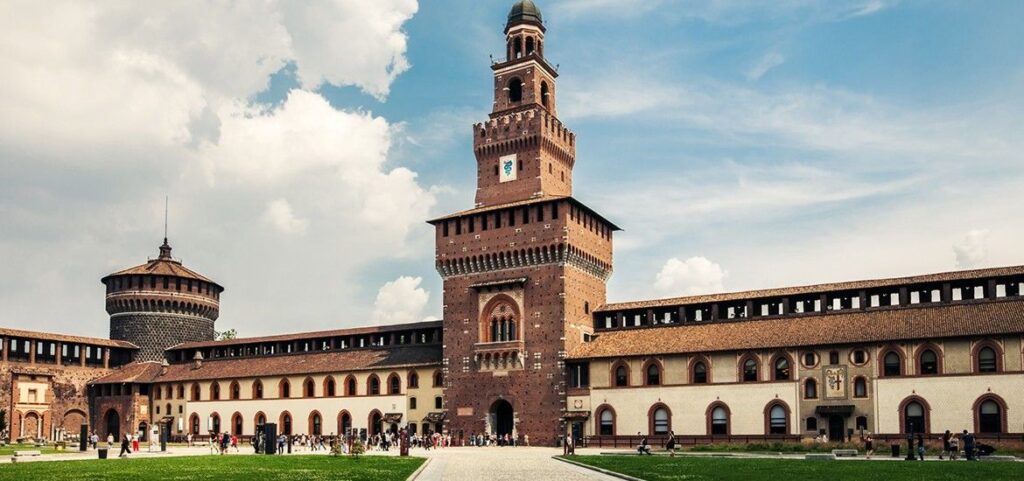
One of Milan’s most iconic landmarks, Sforza Castle (Castello Sforzesco) stands proudly in the heart of the city, offering a captivating journey through history, art, and architecture. Originally built in the 15th century by the powerful Sforza family, this imposing fortress has served as a royal residence, military stronghold, and now a hub for world-class museums. With its grand towers, lush surrounding gardens, and impressive art collections, Sforza Castle is a must-visit destination for anyone exploring Milan.
🌟 Highlights of Sforza Castle
• 🏰 Imposing Architecture
The Castello Sforzesco is a masterpiece of Renaissance military architecture. Its massive outer walls, drawbridges, and towering gates speak to the fortress’s original defensive purpose, while its elegant courtyards and richly decorated interiors reflect its later use as a royal residence.
• 🎨 Pinacoteca di Brera & Art Museums
Inside the castle, you’ll find several museums, including the Pinacoteca di Brera, which houses one of Italy’s most impressive collections of Renaissance art. Works by Leonardo da Vinci, Michelangelo, and Raphael are displayed, giving visitors an enriching experience of Milan’s artistic heritage.
• 🎭 Museum of Ancient Art
Explore the Museum of Ancient Art, which showcases Milan’s rich history with a collection that includes sculptures, tapestries, and medieval frescoes. The museum provides a fascinating insight into the artistic legacy of the region, from the Roman era to the Renaissance.
• 🌳 Sempione Park
Adjacent to the castle is Sempione Park (Parco Sempione), a large green space perfect for a leisurely stroll. Enjoy views of the castle’s grand façade from the park, or relax by the lake or in the charming gardens, which offer a peaceful respite from the city.
• 🛡️ Castle Towers and Courtyards
Take a walk around the castle’s stunning towers, including the Filarete Tower, which offers panoramic views of the surrounding area. The castle’s inner courtyards are ideal for exploring on foot, and many of them host temporary exhibitions and cultural events throughout the year.
🚗 How to Get There
• Public Transport:
The Castello Sforzesco is easily accessible via metro (line 1, Cairoli station) or metro line 2 (stop Lanza), just a short walk from the castle entrance.
• On Foot:
Sforza Castle is located within walking distance of major Milan attractions like Sempione Park, Milan Cathedral (Duomo), and Galleria Vittorio Emanuele II. A pleasant stroll through Milan’s historic center will lead you right to the castle.
🕒 Visitor Information
• Opening Hours:
Sforza Castle is open daily from 7:00 AM to 7:30 PM, while the museums inside the castle typically operate from 9:00 AM to 5:30 PM. Check individual museum schedules for variations, especially on public holidays.
• Entry Fee:
Entry to the castle’s grounds is free, but there is an entrance fee for the museums and exhibitions inside, which typically range between €5-€10. Discounted tickets may be available for students or groups.
• Recommended Visit Duration:
A visit to the castle and its museums will typically take 2 to 3 hours, depending on how much time you want to spend in the museums and the surrounding park.
💡 Travel Tips
• 📸 Best Photo Spots:
The Filarete Tower and the castle’s courtyards offer great photo opportunities, especially during golden hour when the light bathes the castle in a warm glow. The view from Sempione Park is also spectacular.
• 🎨 Plan Your Museum Visit:
Be sure to check the current exhibitions at the Pinacoteca di Brera and the Museum of Ancient Art before your visit, as special collections are often featured throughout the year.
• 🌳 Relax in Sempione Park:
After touring the castle, take some time to relax in Sempione Park, which offers beautiful walking paths, a serene pond, and plenty of green space to unwind.
• 🛍️ Nearby Attractions:
Sforza Castle is close to many other must-see sights in Milan, including the Duomo, Galleria Vittorio Emanuele II, and the Teatro alla Scala. It’s an ideal starting point for exploring the city’s cultural and historical highlights.
Sforza Castle (Castello Sforzesco) is one of Milan’s most iconic and culturally significant landmarks, blending history, art, and architecture in a stunning setting. Whether you’re exploring the Renaissance art collections, walking through the castle’s historic halls, or relaxing in Sempione Park, a visit to this fortress offers a rich, immersive experience that showcases Milan’s grandeur and artistic legacy. Don’t miss this monumental site, which provides a perfect glimpse into Milan’s past and present.
Brera District
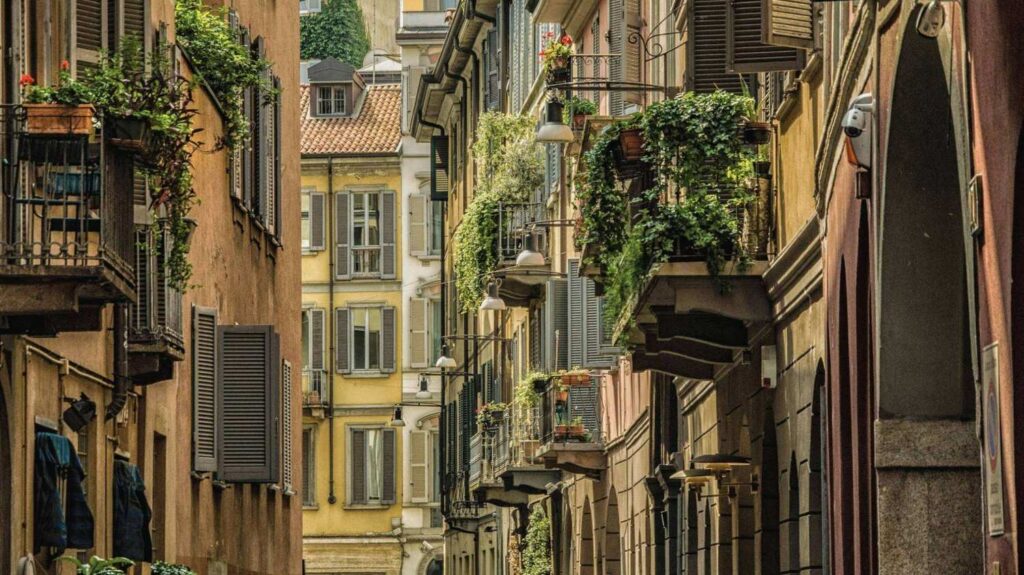
The Brera District (also known as Quartiere Brera) is one of Milan’s most charming and vibrant neighborhoods. Located just north of the city center, Brera is renowned for its artistic heritage, cobblestone streets, trendy boutiques, lively cafes, and historic buildings. Whether you’re an art enthusiast, history lover, or simply someone who enjoys exploring charming neighborhoods, Brera is a must-visit destination in Milan.
🌟 Highlights of Brera District
• Pinacoteca di Brera (Brera Art Gallery)
At the heart of the Brera District lies the Pinacoteca di Brera, one of Italy’s most important art museums. The gallery houses an impressive collection of Renaissance and Baroque masterpieces from artists such as Caravaggio, Raphael, Titian, and Piero della Francesca. Art lovers can spend hours wandering through the halls, admiring works that shaped the course of European art history. The museum is also housed in a beautiful historical building, adding an extra layer of charm to the experience.
• Brera Botanical Garden
Just a short walk from the art gallery, the Brera Botanical Garden (Orto Botanico di Brera) offers a serene escape from the hustle and bustle of the city. Established in the 18th century, this peaceful garden is home to over 1,500 species of plants and trees. The garden is a perfect spot for a relaxing stroll, offering a quiet retreat where you can connect with nature in the heart of Milan.
• Palazzo Brera
A majestic historic building located at the center of the district, Palazzo Brera is home to various institutions, including the Pinacoteca di Brera. This grand palace is an architectural marvel and has served many purposes over the centuries, from a Jesuit monastery to an important academic institution. Visitors can admire its classical facades, beautiful courtyards, and stunning interiors.
• Brera’s Quaint Streets and Piazzas
The streets of Brera are lined with charming cafes, art galleries, and boutiques that make it a perfect place for a leisurely walk. Wander through the Via Brera, a bustling pedestrian street, and explore the small shops selling everything from local art to vintage finds. The Piazza del Carmine and Piazza di Brera are both picturesque spots where you can sit and soak in the Milanese atmosphere.
• Cultural Hotspot and Trendy Cafes
Brera is a cultural and intellectual hub, attracting artists, students, and creatives. The district is home to a variety of cafes, bars, and restaurants, many of which boast a bohemian, artistic vibe. Sip an espresso or indulge in a delicious pastry while people-watching in one of the area’s bustling squares, such as Piazza del Carmine.
• Brera Design District
For design lovers, Brera is also a key area of Milan’s design scene. The neighborhood hosts numerous design studios and hosts Milan Design Week events, where artists and designers showcase the latest trends in furniture, interiors, and product design. The streets come alive with pop-up exhibitions and design showcases, attracting international designers and visitors from all over the world.
🚶♂️ How to Get There
• By Metro:
The Brera District is easily accessible via Milan’s metro system. The nearest metro station is Lanza (Green Line, Line 2), located just a short walk away from the heart of the district. Alternatively, you can take the Cordusio station (Red Line, Line 1) and walk about 10 minutes.
• By Tram or Bus:
Trams 1, 4, and 9 pass through or near the Brera District. Bus lines 61, 94, and 50 also stop in the vicinity, making it easy to reach the area from other parts of Milan.
• On Foot or Bike:
If you’re staying in the city center, Brera is within walking distance of attractions like Piazza del Duomo and Sforza Castle. Alternatively, you can use Milan’s bike-sharing system to reach the district through its scenic streets.
🕒 Visitor Information
• Opening Hours:
Brera’s galleries, museums, and shops have different hours of operation. The Pinacoteca di Brera is typically open from 8:30 AM to 7:15 PM and closed on Mondays. The Brera Botanical Garden is open from 8:30 AM to 12:30 PM and from 2:30 PM to 6:30 PM on weekdays.
• Entry Fee:
Admission to the Pinacoteca di Brera is around €15 for adults. Discounts are available for students, seniors, and children. The Brera Botanical Garden typically charges a small entry fee of €5 for adults, with reduced rates for students.
• Recommended Visit Duration:
You’ll need at least 2 to 3 hours to fully explore the Pinacoteca di Brera and Botanical Garden. However, if you’re just wandering around, the district can easily occupy you for a couple of hours as you stroll through its charming streets and cafes.
💡 Travel Tips
• 🎟️ Book Tickets in Advance:
To avoid waiting in line at the Pinacoteca di Brera, consider booking tickets online in advance, especially during the peak tourist season. Many attractions in Milan offer skip-the-line tickets to save time.
• 👟 Wear Comfortable Shoes:
Brera is a charming area to explore on foot, with cobblestone streets and narrow alleys. Make sure to wear comfortable shoes for walking.
• ☕ Indulge in Brera’s Café Culture:
The Brera district is home to many stylish cafes that are perfect for relaxing. Take the time to enjoy an espresso or a Milanese specialty like panettone or risotto alla Milanese. Don’t forget to try a traditional aperitivo (pre-dinner drinks with small snacks) in one of Brera’s trendy bars.
• 🎨 Visit During Art Events:
If you’re in Milan during Milan Design Week or Art Week, Brera’s streets are filled with special events, exhibitions, and showcases. This is an ideal time to experience the neighborhood’s artistic atmosphere at its best.
The Brera District is the perfect blend of history, art, and Milanese charm. Whether you’re admiring the works in the Pinacoteca di Brera, strolling through its picturesque streets, or sipping an espresso at a local café, Brera offers an authentic Milanese experience. With its mix of cultural significance, artistic energy, and trendy ambiance, Brera is a district that captures the spirit of Milan and invites visitors to explore at their own pace.
Navigli Canals
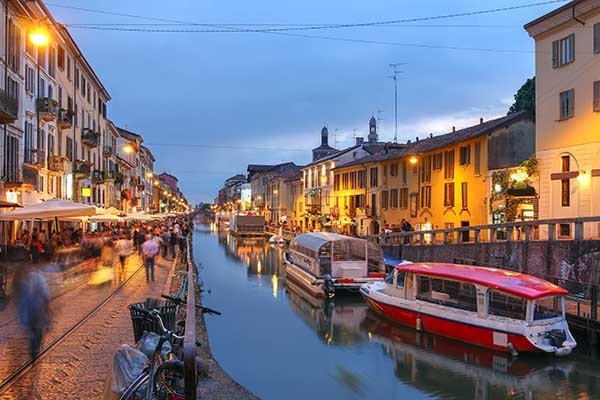
The Navigli Canals are one of Milan’s most charming and scenic areas, offering a unique blend of history, culture, and nightlife. Originally built in the 12th century to transport goods, these canals were once vital to Milan’s economy and infrastructure. Today, the Navigli District has transformed into one of the city’s most fashionable and lively neighborhoods, known for its picturesque waterways, vibrant cafés, boutiques, and art galleries. A visit here provides a glimpse into Milan’s past while embracing the modern spirit of creativity and leisure.
🌟 Highlights of Navigli Canals
• 🚤 Naviglio Grande
The Naviglio Grande is the most famous canal in Milan and the oldest, stretching over 30 kilometers. It was originally used for transporting marble to build Milan’s iconic Duomo. Today, the canal is lined with charming cafés, trendy restaurants, and shops. Enjoy a leisurely stroll along its banks, or hop on a boat tour for a more scenic experience.
• 🎨 Art Galleries and Studios
The Navigli District is a hub for Milan’s artistic community. Explore the many art galleries and studios that line the canals, showcasing contemporary works by local and international artists. It’s a great spot to discover Milan’s emerging art scene and purchase unique works.
• 🍝 Dining Along the Canals
The canals are dotted with an array of restaurants and trattorias, offering traditional Milanese cuisine and international flavors. Enjoy a classic aperitivo (Italian happy hour) along the canal, or savor a traditional risotto alla Milanese while watching the reflections of the water dance on the buildings. Naviglio Grande and Naviglio Pavese have some of the best dining spots in Milan.
• 🍸 Nightlife and Aperitivo Culture
Navigli is known for its vibrant nightlife, with numerous bars and clubs along the canals offering everything from casual drinks to sophisticated cocktails. The area is especially famous for its aperitivo culture – an Italian tradition where drinks are accompanied by an assortment of snacks. As the evening unfolds, the canalside transforms into one of the best spots to socialize and unwind.
• 🛍️ Shops and Boutiques
In addition to cafés and restaurants, Navigli is home to many unique boutiques and antique shops. Browse for handmade goods, vintage fashion, and one-of-a-kind home décor items. The area is also known for its antique market held every last Sunday of the month, perfect for collectors and treasure hunters.
🚗 How to Get There
• Public Transport:
The Navigli district is easily accessible via metro (Line 2, Porta Genova station). It’s also close to the Tram 3 and Tram 2 lines, which make it simple to get from Milan’s central attractions to the canals.
• On Foot:
If you’re already in the city center, you can walk to the Navigli district in about 20-30 minutes from Piazza del Duomo. The walk is scenic and pleasant, passing through the historic heart of Milan.
🕒 Visitor Information
• Opening Hours:
Navigli is open year-round, and there are no specific opening hours for the canals themselves. However, individual shops, cafés, and galleries generally open from 10:00 AM to 7:00 PM, while the bars and restaurants stay open late into the night.
• Entry Fee:
There’s no fee to walk along the canals or to explore the area. However, you may want to budget for dining, shopping, or taking a canal boat tour, which may have a small cost.
• Recommended Visit Duration:
For a full experience, plan to spend 2–3 hours in the Navigli district. This allows time to wander the canals, enjoy some food, visit art galleries, and experience the lively atmosphere.
💡 Travel Tips
• 🎟️ Take a Boat Tour:
To get a different perspective of the canals, consider taking a boat tour. The guided tours offer a great way to learn more about the history of the canals while enjoying the views.
• 🍽️ Enjoy Aperitivo at Sunset:
For the best experience, time your visit around sunset. The canals are especially beautiful at golden hour, and it’s the perfect time to enjoy an aperitivo as the area comes to life with locals and tourists alike.
• 📸 Best Photo Opportunities:
The Naviglio Grande is particularly photogenic, especially in the early morning when the canals are peaceful, or in the evening when the lights reflect beautifully on the water. Don’t miss capturing the colorful buildings and lively street scenes.
• 🛍️ Shop for Unique Souvenirs:
If you’re looking for something special to take home, Navigli is the place to find unique, handmade items. Browse the antique shops, art galleries, and independent boutiques for one-of-a-kind souvenirs.
The Navigli Canals are a must-visit destination in Milan, offering a perfect blend of history, culture, food, and nightlife. Whether you’re exploring the canals on foot, enjoying an aperitivo, or browsing art galleries, Navigli is a place that offers both relaxation and excitement. It’s a beautiful spot to immerse yourself in Milanese life, discover local art, and experience the city’s iconic waterways. Don’t miss the opportunity to explore one of Milan’s most picturesque and vibrant districts!
Teatro alla Scala
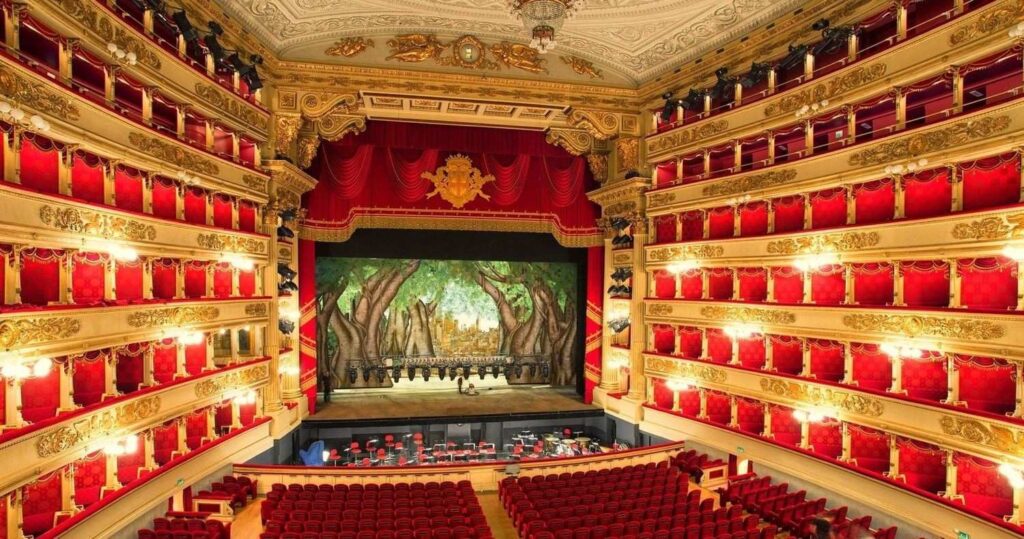
Renowned as one of the most prestigious opera houses in the world, Teatro alla Scala (commonly known simply as La Scala) is a symbol of Milan’s deep cultural and artistic heritage. Opened in 1778, this grand theatre has hosted countless world premieres and performances by some of the greatest opera singers, conductors, and composers throughout history, including Verdi, Puccini, and Toscanini. Whether you’re a fan of classical music or a newcomer to the world of opera, a visit to Teatro alla Scala promises to be an unforgettable experience.
🌟 Highlights of Teatro alla Scala
• The History of La Scala
Founded by Empress Maria Theresa of Austria, Teatro alla Scala was designed by the architect Giovanni Piermarini and quickly became the heart of Milan’s vibrant cultural scene. The theatre has witnessed the debut of some of the most iconic operas in history, including Verdi’s “Nabucco” and Puccini’s “Madama Butterfly.” Over the centuries, the theatre has undergone several renovations and refurbishments, but it remains an unshakable symbol of Italian operatic excellence.
• The Spectacular Interior
From the moment you step inside, the opulence of the theatre is undeniable. The interior is a masterpiece of neoclassical design, featuring red velvet curtains, golden balconies, and an expansive horseshoe-shaped auditorium. The central chandelier, an imposing crystal piece, lights up the space with a stunning glow, adding to the atmosphere of grandeur. The theatre’s 2,000 seats are arranged in a way that ensures an optimal view for all patrons, offering an unparalleled experience of sight and sound.
• La Scala Museum
The Teatro alla Scala Museum (Museo Teatrale alla Scala) is a treasure trove for music and theatre lovers. Located within the opera house, the museum showcases an extensive collection of stage costumes, musical instruments, manuscripts, and memorabilia related to La Scala’s rich history. Highlights include original opera scores by legendary composers like Giuseppe Verdi, Giacomo Puccini, and Vincenzo Bellini, as well as photographs and artwork documenting the theatre’s storied past.
• Famous Performances
Teatro alla Scala has been the venue for many of the most famous operatic performances in history. It has hosted premieres by composers like Verdi, Puccini, and Rossini, and has been the stage for legendary performers such as Maria Callas, Luciano Pavarotti, and Placido Domingo. Visiting La Scala offers you the chance to imagine the great artists who have graced its stage and to witness the magnificence of the performances.
• Seasonal Opera and Ballet Performances
Teatro alla Scala continues to be a major hub for both opera and ballet performances. Each season is packed with a mix of classical operas, contemporary works, and stunning ballet productions. If you’re lucky enough to be in Milan during the season, experiencing a live performance at La Scala is a bucket-list experience for any cultural enthusiast.
🚶♂️ How to Get There
• By Metro:
Teatro alla Scala is conveniently located in the heart of Milan, just a short walk from Piazza del Duomo. The nearest metro station is Duomo (Red Line, Line 1 and Yellow Line, Line 3), which is about a 5-minute walk from the theatre. Alternatively, you can use the Montenapoleone metro station (Yellow Line, Line 3).
• By Tram:
Tram lines 1 and 19 pass through Piazza della Scala, making it easy to access the theatre from various parts of the city.
• On Foot:
Teatro alla Scala is located near other Milan landmarks such as Piazza del Duomo and the Galleria Vittorio Emanuele II, making it perfect for visitors who prefer to explore on foot. A stroll through the city center will lead you directly to the theatre.
🕒 Visitor Information
• Opening Hours:
The Teatro alla Scala Museum is open daily from 9:00 AM to 5:30 PM, with longer hours on weekends. However, if you plan on attending a performance, the opera house opens its doors around 1.5 hours before the show begins. Make sure to check the schedule for performances and events when planning your visit.
• Entry Fee:
Tickets for the La Scala Museum usually cost around €10-€15 for adults. For those looking to attend an opera performance, ticket prices vary widely depending on the production, seat location, and time of year. Tickets for a performance can range from €25 to over €200. Booking in advance is essential, especially for popular shows.
• Recommended Visit Duration:
A visit to Teatro alla Scala Museum typically takes about 1 to 2 hours. If you’re attending a performance, plan to arrive at least 30 minutes before the show to fully enjoy the theatre’s grandeur.
💡 Travel Tips
• 🎟️ Book Performance Tickets Early:
To secure your seat for a performance at Teatro alla Scala, it’s recommended to book tickets in advance. You can purchase tickets online through the official website or from authorized resellers.
• 👗 Dress Code:
While there is no strict dress code, attending a performance at La Scala is a special occasion. Smart casual attire is appropriate, but for evening performances, you may want to dress a little more formally to match the elegance of the occasion.
• 🎧 Opera and Ballet Etiquette:
When attending a performance, it’s important to be mindful of the etiquette. Arrive on time and refrain from talking or making noise during the show. Silence your phone and avoid using bright lights for photos.
• 🧳 Combine with Nearby Attractions:
Teatro alla Scala is located in the city’s cultural heart, so you can easily combine your visit with other nearby landmarks like Piazza del Duomo, Galleria Vittorio Emanuele II, and the Sforza Castle. Take the time to explore Milan’s vibrant center and indulge in some shopping or dining.
A visit to Teatro alla Scala is a cultural experience like no other. Whether you’re taking in the awe-inspiring beauty of the theatre’s architecture, exploring the treasures of the museum, or attending a world-class opera or ballet performance, La Scala will leave you with lasting memories of Milan’s artistic brilliance. This iconic institution continues to inspire and captivate visitors, making it an essential stop for anyone looking to experience the best of Milan’s rich cultural heritage.
CityLife District
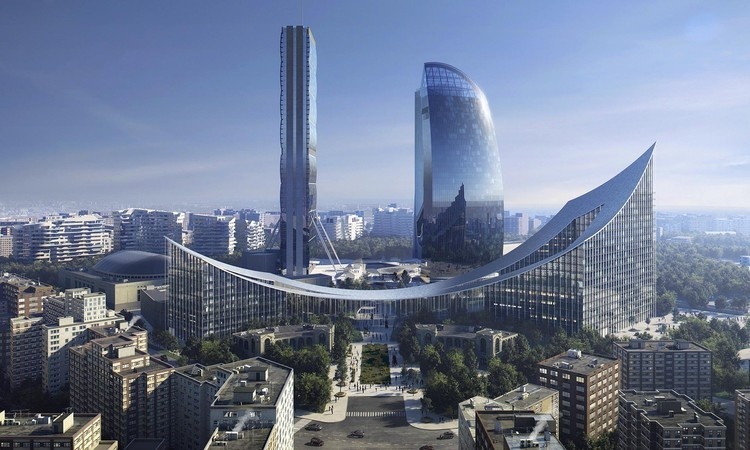
CityLife District is Milan’s cutting-edge, futuristic neighborhood, blending modern architecture, green spaces, and a vibrant lifestyle. Situated just northwest of the city center, this district represents Milan’s forward-thinking vision, where contemporary living meets innovation. Home to towering skyscrapers, lush parks, and upscale shopping, CityLife is a must-visit for those eager to explore Milan’s dynamic urban evolution.
🌟 Highlights of CityLife District
• 🏙️ Iconic Skyscrapers: The Three Towers
The most striking feature of the CityLife District is its trio of stunning skyscrapers—Torre Isozaki, Torre Hadid, and Torre Libeskind. Designed by renowned architects Arata Isozaki, Zaha Hadid, and Daniel Libeskind, these architectural masterpieces define Milan’s skyline. Each tower is unique in design, with Torre Isozaki being the tallest, reaching over 200 meters. These towers house offices, residential spaces, and even public areas, adding to the vibrant atmosphere of the district.
• 🌳 CityLife Park (Parco di CityLife)
A peaceful green oasis in the heart of the district, CityLife Park is a beautifully landscaped park offering a refreshing escape from the urban hustle. Spanning over 170,000 square meters, the park features walking paths, ponds, playgrounds, and areas for relaxation. It’s a perfect spot for picnics, jogging, or simply enjoying the outdoors while surrounded by stunning architecture.
• 🛍️ CityLife Shopping District
For shopping enthusiasts, the CityLife Shopping District is Milan’s newest shopping destination, featuring a mix of luxury brands, international stores, and Italian fashion icons. This open-air shopping mall is not only home to top-tier boutiques but also offers dining options, cafés, and even art galleries, making it an ideal place to spend a few hours browsing or enjoying a coffee.
• 🍽️ Culinary Delights
CityLife is also known for its chic restaurants and trendy cafés. Whether you’re in the mood for a gourmet meal or a casual bite, you’ll find a variety of dining options here, with many offering spectacular views of the surrounding architecture. From rooftop bars to casual eateries, the area provides something for every taste.
• 🎨 Public Art and Design
As part of Milan’s commitment to blending art and architecture, the CityLife District features several installations and sculptures. Walk through the area, and you’ll find public artworks that complement the district’s modern aesthetics. It’s an urban space that seamlessly integrates art into everyday life.
🚗 How to Get There
• Public Transport:
The CityLife District is well-connected by Milan’s public transport system. The M5 metro line (Lilla Line) has a dedicated stop at CityLife, making it easy to reach from the city center and other key areas. Trams 10 and 27 also stop nearby.
• On Foot:
CityLife is a 20-minute walk from Milan’s historic center, so if you’re exploring Milan on foot, it’s a pleasant stroll through one of the city’s more modern areas.
🕒 Visitor Information
• Opening Hours:
Most parts of the CityLife District, including the park and public spaces, are accessible throughout the day. The shopping district and restaurants usually operate from 10:00 AM to 8:00 PM, with some restaurants and bars staying open later.
• Entry Fee:
Access to the CityLife Park and public areas is free. For shopping and dining, costs will vary depending on your choice of store or restaurant. Entrance to specific events or exhibitions may require tickets.
• Recommended Visit Duration:
For a relaxed exploration, plan to spend around 2–3 hours in CityLife. This allows enough time to wander the shopping district, stroll through the park, and enjoy the area’s modern architecture.
💡 Travel Tips
• 🛍️ For Shoppers:
If you’re a fan of luxury fashion or Italian design, be sure to check out the variety of stores at CityLife Shopping District. You’ll find flagship stores for top Italian and international brands, along with unique boutiques offering exclusive products.
• 🌳 Relax in the Park:
If you need a break from the modern architecture, CityLife Park offers a tranquil space to relax. Bring a book, enjoy a coffee from one of the nearby cafés, or simply admire the green landscapes and futuristic buildings around you.
• 📸 Best Photo Spots:
The Three Towers provide some of the best photo opportunities in Milan. The surrounding views from the park, with the modern skyscrapers in the background, are perfect for snapping unique architectural shots.
• 🍽️ Dining with a View:
For a special experience, head to one of the restaurants on the upper floors of the skyscrapers. Many offer panoramic views of Milan, making for a memorable dining experience.
CityLife District represents Milan’s bold future, blending cutting-edge architecture, green spaces, and urban life into a seamless whole. Whether you’re shopping, dining, or simply taking in the views from the park, this area provides a fresh perspective on the city’s modern side. It’s a great place to experience Milan’s vision for a sustainable and stylish future, all while enjoying its vibrant atmosphere. Whether you’re a fan of contemporary architecture, a shopaholic, or someone who loves exploring green spaces, CityLife is a must-see district that’s full of surprises.
Piazza Mercanti
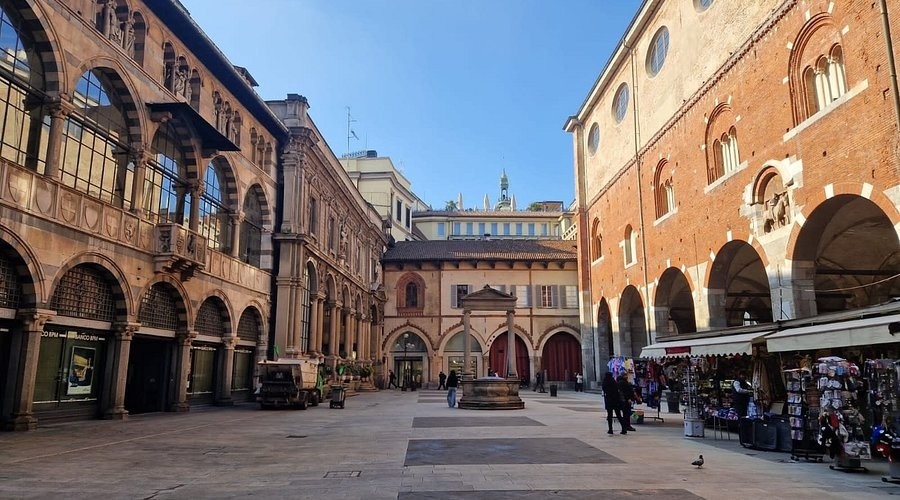
Nestled between the iconic Piazza del Duomo and Piazza Cordusio, Piazza Mercanti is one of Milan’s most historically significant squares. Often overlooked by tourists in favor of more famous landmarks, this medieval square is a hidden gem, offering a glimpse into Milan’s medieval past and providing a peaceful escape from the hustle and bustle of the city center. Once the hub of Milan’s commercial and social life, Piazza Mercanti retains its charm through its historic architecture and intimate atmosphere, making it a must-visit for history buffs and anyone interested in the city’s rich heritage.
🌟 Highlights of Piazza Mercanti
• Historical Significance
Dating back to the 13th century, Piazza Mercanti was the heart of Milan’s commercial activities during the medieval period. In its prime, the square was filled with markets, merchants, and traders, and it was an important civic and political space. The square was also the site of major public events, such as executions and political meetings. Today, while it has lost some of its original purpose, it still carries an aura of medieval Milan.
• Palazzo della Ragione
At the northern end of Piazza Mercanti stands the Palazzo della Ragione (Palace of Reason), a stunning example of medieval architecture. This 13th-century building was once used as the city’s law court and administrative headquarters. Today, the building is an important part of Milan’s historical heritage, with its large archway and impressive façade offering a striking backdrop to the square. The loggia (open gallery) on the first floor, with its arcades, provides a picturesque view of the surrounding area.
• Loggia degli Osii
The Loggia degli Osii is another historical gem that adds to the square’s medieval character. This open-air structure once served as a meeting place for merchants and was used for public proclamations. The building’s elegant arches and decorative columns are prime examples of Gothic architecture, and it remains a beautiful spot to linger and take in the surroundings.
• Casa Panigarola
One of the most photogenic buildings in Piazza Mercanti is Casa Panigarola, a 14th-century residence with a charming medieval façade. This building, with its intricate stonework and narrow windows, stands as a reminder of the residential side of medieval Milan. Today, it is home to shops and offices, but its appearance retains much of the ancient charm.
• The “Piazza dei Mercanti” Fountain
Adding to the tranquil atmosphere of Piazza Mercanti, you’ll find a small fountain nestled in the corner of the square. This quiet feature is a nod to the square’s commercial roots, offering a peaceful spot to sit and relax.
• Architectural Charm and Tranquil Atmosphere
Despite its central location, Piazza Mercanti is often less crowded than the nearby Piazza del Duomo or Galleria Vittorio Emanuele II, which makes it the perfect place to enjoy the quieter, more reflective side of Milan. The square’s medieval buildings, cobblestone streets, and charming atmosphere make it one of the most romantic and photogenic spots in the city.
🚶♂️ How to Get There
• By Metro:
Piazza Mercanti is within walking distance of the Duomo metro station (Red Line, Line 1 and Yellow Line, Line 3), located just a few minutes’ walk away. It’s also easily accessible from Cordusio metro station (Red Line, Line 1) and Cairoli (Green Line, Line 2).
• On Foot:
The square is located in Milan’s historic center, so if you’re already visiting attractions like the Duomo di Milano or Galleria Vittorio Emanuele II, it’s just a short walk. Piazza Mercanti is tucked away on the side streets, providing an easy detour as you explore the city’s cultural hub.
• By Tram:
Tram lines 1, 2, and 14 pass through nearby streets, including Piazza Cordusio, which is just a short walk from Piazza Mercanti.
🕒 Visitor Information
• Opening Hours:
Piazza Mercanti is a public square, so it is open to visitors at all times. The buildings around the square are typically open to the public during business hours, but they may be closed on holidays or special occasions. Check the Palazzo della Ragione or Loggia degli Osii for more details on their visiting hours.
• Entry Fee:
As a public square, there is no entry fee to visit Piazza Mercanti or to walk around the buildings. However, some attractions like the Palazzo della Ragione may have small entry fees if you want to explore the interior.
• Recommended Visit Duration:
You can easily explore Piazza Mercanti in 30 minutes to 1 hour, especially if you’re planning to visit the nearby attractions or enjoy a coffee in one of the square’s cafes.
💡 Travel Tips
• 🎟️ Explore on Foot:
Given its proximity to other major landmarks like Piazza del Duomo and Galleria Vittorio Emanuele II, Piazza Mercanti is perfect for a leisurely walk. Allow yourself to wander and explore the area on foot, and don’t forget to bring your camera to capture the medieval beauty of the square.
• 👟 Wear Comfortable Shoes:
As much of the square and its surroundings have cobblestone streets, be sure to wear comfortable shoes for walking.
• ☕ Enjoy a Coffee at a Local Café:
While not as crowded as the more touristy squares, Piazza Mercanti still offers several quaint cafés where you can relax and enjoy a drink while soaking in the medieval atmosphere. Take your time and appreciate the historical significance of the area.
• 🕰️ Visit Early or Late:
For the best experience, visit early in the morning or later in the evening when the square is less crowded. You’ll be able to enjoy its peaceful atmosphere and capture the square in the soft light of dawn or dusk.
Piazza Mercanti may not be as famous as Milan’s other grand squares, but it is an essential part of the city’s rich history and offers a glimpse into its medieval past. The historic buildings, quiet charm, and peaceful atmosphere make it an ideal spot to reflect on Milan’s evolution while enjoying a break from the more bustling areas of the city. Whether you’re a history lover, an architecture enthusiast, or simply looking for a beautiful corner of Milan to explore, Piazza Mercanti is an often-overlooked gem that should be on your itinerary.
Parco Sempione
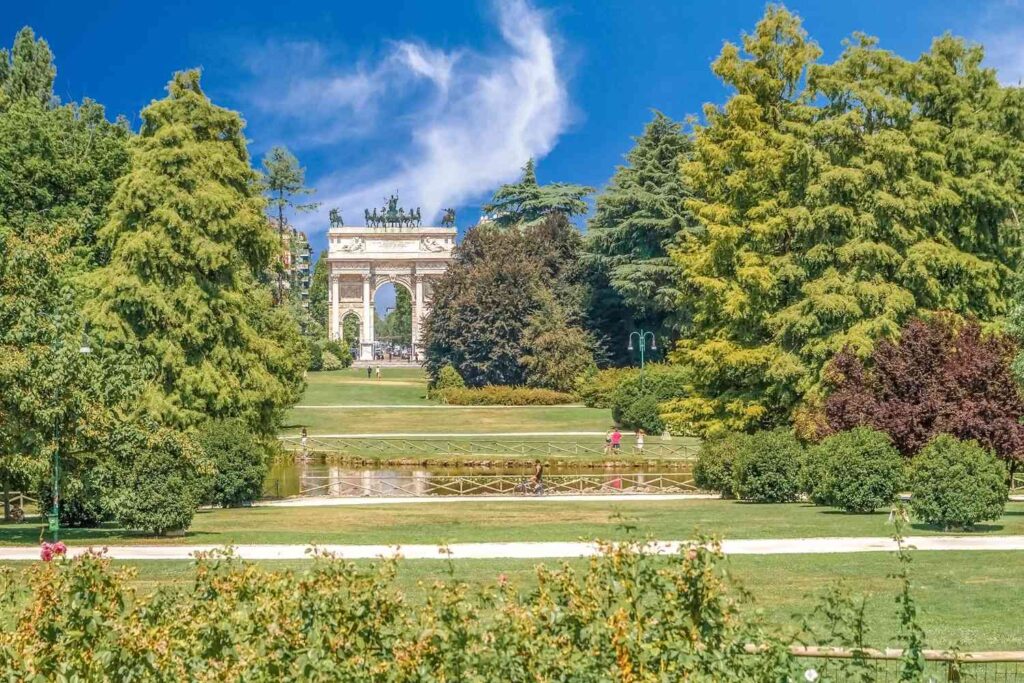
🌳 Parco Sempione – Milan’s Serene Green Heart
Located just behind the iconic Sforza Castle, Parco Sempione is Milan’s most beloved public park — a lush, expansive retreat offering locals and visitors a peaceful escape from the city’s urban rhythm. Blending nature, history, and culture, this 47-hectare park is perfect for picnics, leisurely walks, outdoor sports, and admiring historic monuments surrounded by scenic beauty.
🌟 Highlights of Parco Sempione
• 🏰 Castello Sforzesco Backdrop
The park stretches behind the magnificent Sforza Castle, giving visitors a view of Renaissance-era fortifications nestled in green surroundings.
• 🌉 Romantic Bridges & Ponds
Wander past picturesque bridges and tranquil ponds with ducks, turtles, and lush vegetation — a perfect setting for quiet reflection or a scenic stroll.
• 🖼️ Triennale Milano Design Museum
Located within the park, this modern design museum offers contemporary art exhibitions, architecture, and cultural events — ideal for design lovers.
• 🎡 Torre Branca (Branca Tower)
Ascend this 108-meter-high tower for breathtaking panoramic views of Milan’s skyline and even the Alps on a clear day.
• 🏛️ Arco della Pace (Arch of Peace)
Admire this grand neoclassical arch at the park’s northern edge — a historical monument that also serves as a gateway to the city’s fashionable Corso Sempione.
🚗 How to Get There
• By Metro:
Take Line 1 (Red) to Cairoli or Cadorna, or Line 2 (Green) to Lanza. All stations are a short walk from the park.
• By Tram/Bus:
Several tram and bus lines stop near the park’s entrances.
• On Foot or Bike:
Easily accessible from central Milan; also connected to a larger network of bike-friendly paths.
🕒 Visitor Information
• Opening Hours:
Daily from 6:30 AM to 9:00 PM (may vary slightly by season).
• Entry Fee:
Free entry to the park. Separate attractions like Triennale and Torre Branca may have entrance fees.
• Recommended Visit Duration:
Allow 1 to 2 hours for a casual visit, or more if you’re exploring museums and monuments.
💡 Travel Tips
• 🧺 Perfect Picnic Spot:
Bring snacks or local treats and enjoy a picnic with views of the castle or lake.
• 📷 Best Photo Spots:
Don’t miss shots of the Arco della Pace at sunset or panoramic skyline photos from Torre Branca.
• 🚴 Rent a Bike:
Cycling through Parco Sempione is a relaxing way to see the entire park and nearby landmarks.
• 🍦 Grab Gelato Nearby:
There are plenty of cafés and gelaterias just outside the park — perfect for a post-walk treat.
Parco Sempione is more than just a park — it’s Milan’s green soul, seamlessly combining culture, history, and nature. Whether you’re unwinding under a shady tree, admiring monumental architecture, or exploring Italian design at Triennale, this park offers a refreshing and enriching experience in the heart of the city.
📝 Local Travel Tips
- Tipping: Not expected, but rounding up or leaving 5–10% in restaurants is polite.
- Safety: Milan is generally safe, but stay alert for pickpockets in crowded areas.
- Dress code: Italians dress well—even casual wear is stylish. Pack accordingly.
- Language: Learn a few basic Italian phrases—it goes a long way in local shops and trattorias.
✨ Final Thoughts
Milan is a city that rewards both the trend-hunters and the tradition-lovers. Whether you’re gazing at da Vinci’s masterpiece, sipping espresso in a historic piazza, or shopping the latest runway looks, Milan invites you to enjoy la dolce vita—Milan-style. This city isn’t just a stopover—it’s a destination that leaves a lasting impression of elegance, creativity, and cultural richness.

I’m Shreyash Mhashilkar — a full-stack developer by profession, and a passionate explorer of the future at heart.
With a strong foundation in both front-end and back-end , I spend my days building websites and applications that are not just functional, but scalable, intuitive, and user-focused.

